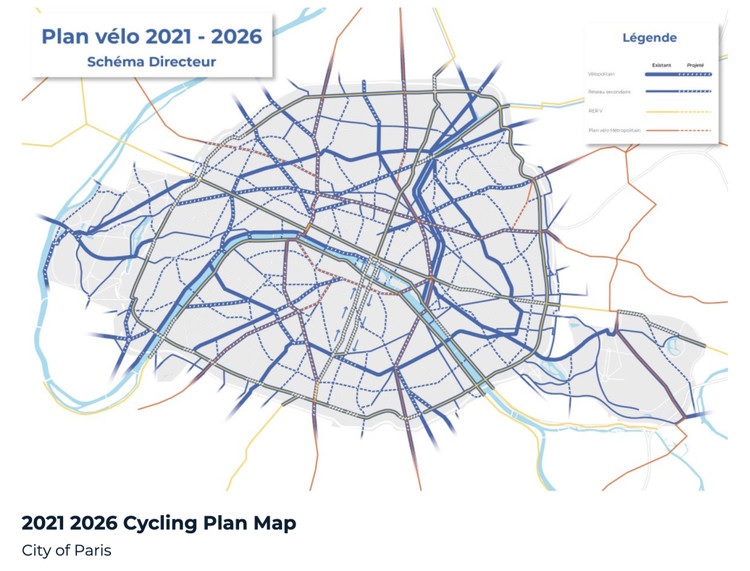Derived from the pandemic in 2020, many European cities decided to improve their bike lane infrastructures by offering users higher availability of roads, parking spots and separated bike lanes, thus encouraging the use of alternative transportation while ensuring public safety. In many cities around the world, users tried to avoid commuting on massive transportation systems, this meant many people turned to bikes instead of using the metro or bus systems. In some cities like Paris or Amsterdam, the increase of bikers makes it necessary to upgrade the cycling infrastructure and expand the city network for bikes.
Global warming obliges local governments to adopt greener strategies and procure the reduction of cars in many cities. These contemporary needs are the inspiration for launching green bike friendly strategies all over the world.
The City of Paris has decided to invest 250 million euro to launch their Bike Plan, a proposal that is set to provide a wider and safer cycling infrastructure. The 5 year plan is designed to expand cycling routes and add 180 kilometers of new bike lanes. The parking spots will increase from 60000 to 180000. The new routes will also connect the neighboring suburbs and the city and will provide integration with the metro system.
Currently the city of Paris has 1 million cycling journeys daily and providing better infrastructure seems very urgent. The City of Paris announced in May 2020 the increase of more pedestrian and cyclist friendly spaces to reduce the number of cars in the city center. This approach seeks to reduce pollution and traffic congestion after the Covid 19 lockdown. One of the most important improvements will be the separation between bike lanes and car lanes using physical barriers to warrant the safety of bikers and pedestrians.
Amsterdam, recognized worldwide as one of the top bike-friendly cities, is also implementing changes to increase its cycling infrastructure. In 2022 a new plan for improving bicycle parking lots and existing bike lanes will begin. The creation of Royal routes will ensure the capacity for more bikes, as thousands of new habitants come to Amsterdam every year. The city government has decided to redesign intersections and increase the number of low speed cycling streets to provide pedestrian and cyclist safety.
Another European city interested in becoming more bike-friendly is Berlin, where the local government launched a new plan of bicycle superhighways. The department for the Environment, Transport and Climate Protection commissioned by the Berlin Senate, has approved 12 new bike paths that would be completely separated from other vehicles on the road. The approach will increase the number of bicycles to 2.4 million by 2025.
The pandemic brought many challenges for businesses and local governments and inspired the development of ideas to overcome these challenges ensuring a healthier and greener environment for citizens around the world.








